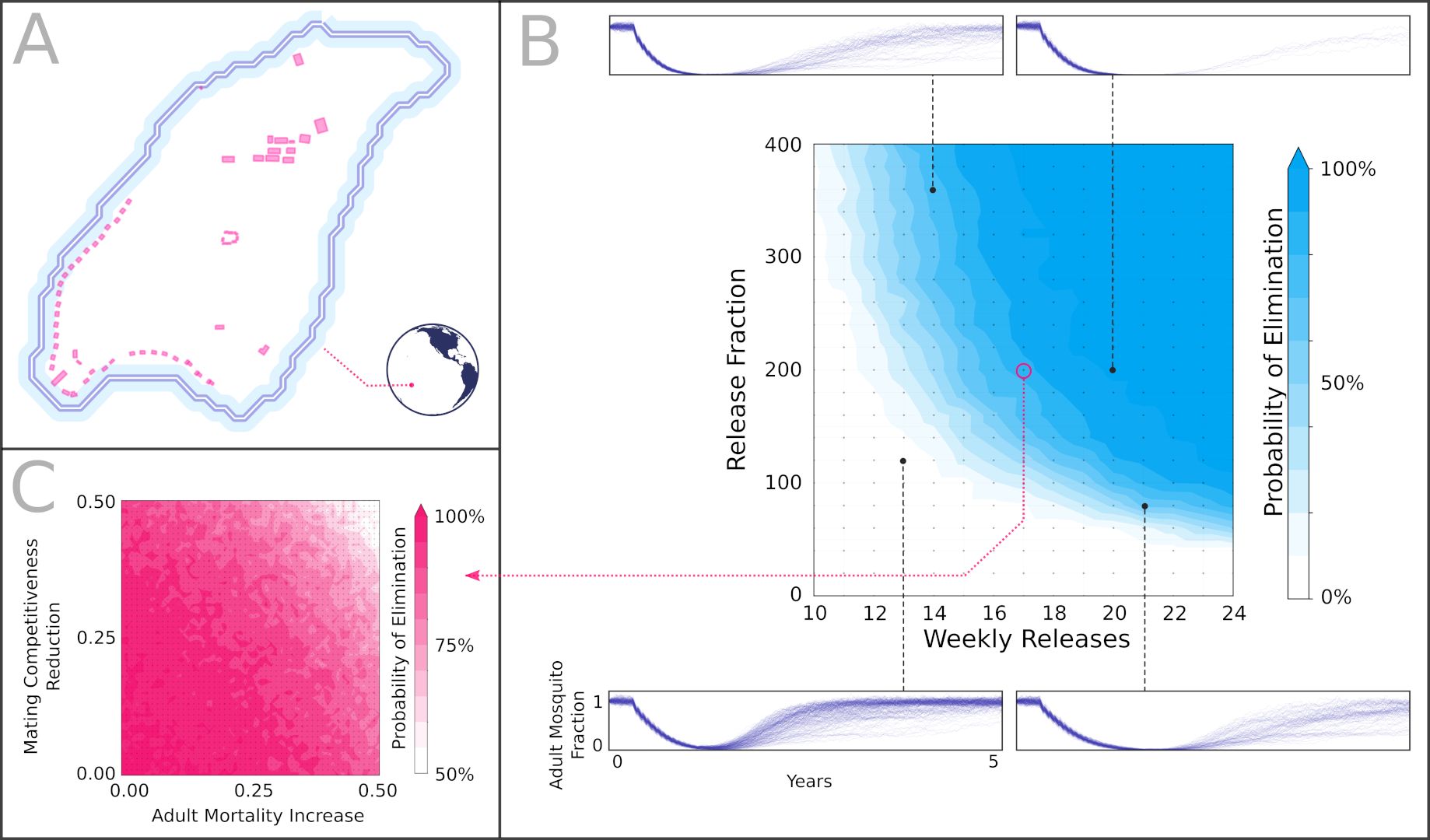MoNeT (Mosquito Networks Taskforce) was born in efforts to come up with standardized methods to understand and analyze complex spatial mosquito behavior.
Intro
This project was initially created to analyze the spatial response of genetic constructs to control mosquito-borne diseases. Over time, however, it became clear that it could respond to a wider array of needs in the field. As such, it was branched out as a playground in which I could develop applications with help of a series of undergrad students looking for research experience.


The common underlying theme amongst all of these application branches is: mosquito heterogeneity and its impact in genetic constructs dispersal.
Branches
The MoNeT project sprung several minor sub-projects and work-branches. Some of the main ones follow.
Data Analysis Pipelines
Arguably the main line of work in the MoNeT project is the creation of data analysis pipelines that couple to MGDrivE’s simulation outputs. Through these lines of work, MoNeT provides all the backbone necessary to process extremely large amounts of data to produce useful insights on the spatiotemporal components of mosquito gene drive technologies (on the order of 1TB of CSV files being processed in 2 days).

With these pipelines, we can process simulated populations from MGDrivE, and aggregate them spatially in sectors (usually through spatial clustering) to generate more meaningful analysis and panels to support our studies.

Gene Drive Time Dynamics
Another extremely important part of our analyses is the creation and implementation of meaningful metrics that allow us to characterize the response of gene drives in terms of their ability to replace or suppress mosquitos that are able to transmit diseases. To this end, we have come up with a very useful set of summary statistics that are the core of our pipelines. With these at hand, we can compare the effectiveness of several genetic control interventions in an automatic and statistically sound way.

Spatial Responses to Drives
One of the core goals of the MoNeT project’s inception was to use network theory to analyze gene drive’s spread through spatial environments, and to that end, a fair amount of time was spent developing tools to facilitate the aggregation and clustering of landscapes.

To combine the time dynamics along with the spatial components, we came up with some innovative visualizations along the way. One of such is an adaptation of a heatmap where each row in the y-axis is a mosquito habitat, the x-axis is time, and the color densities represent the presence of allelic combinations in the mosquito population.

Migration Networks
We also developed methods to detect mosquito sources and sinks with a combination of spatial clustering techniques and network flow analysis. These techniques have aided our understanding on how spatial processes along with resources availability can shape mosquito movement in spatial contexts.

Machine-Learning Models
Lately, and after the constant improvement of our throughput we have been able to put together some large datasets to do use Machine Learning techniques upon it. The idea is to create surrogate models that we can share with the community so that other research groups can explore different parameter combinations and their outcomes.

Code Repos
- pypi package: MoNeT_MGDrivE
- Analysis Repos: Original, Data Analysis, Machine Learning